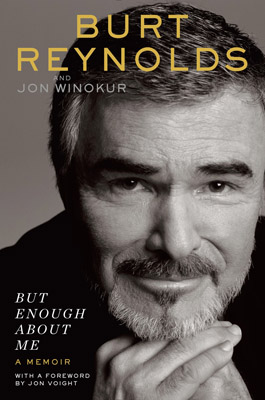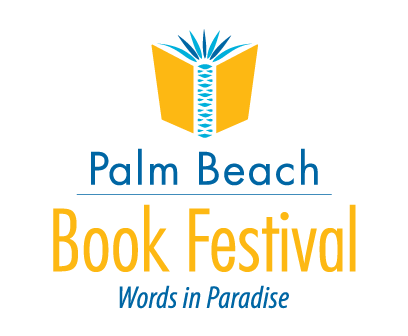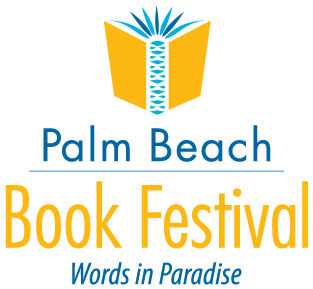One-on-One Panel “In conversation with Burt Reynolds – Memoir of the Year”
 Burt Reynolds has made more than a hundred movies, and was number one at the box office for five years straight in the 1970s. He has had leading roles in such notable films as Deliverance, The Longest Yard, Hustle, Gator, The Best Little Whorehouse in Texas, Striptease, and Boogie Nights, for which he earned a Best Supporting Actor Golden Globe and an Oscar nomination. He also received an Emmy and a Golden Globe for his starring role on the popular sitcom Evening Shade.
Burt Reynolds has made more than a hundred movies, and was number one at the box office for five years straight in the 1970s. He has had leading roles in such notable films as Deliverance, The Longest Yard, Hustle, Gator, The Best Little Whorehouse in Texas, Striptease, and Boogie Nights, for which he earned a Best Supporting Actor Golden Globe and an Oscar nomination. He also received an Emmy and a Golden Globe for his starring role on the popular sitcom Evening Shade.
Growing up as the son of a police chief in South Florida, Reynolds was a talented high school and college football player who hoped to make it into the pros until a horrific car accident permanently derailed his athletic career. An English professor at a community college, Watson Duncan, cast him in his first lead role in a play, and he soon headed to New York to make his name on Broadway during one of its golden ages. His roommate was Rip Torn, and he crossed paths with the likes of Joanne Woodward, Gore Vidal (who savaged him verbally), William Inge, Tennessee Williams (who asked why he wasn’t in Sweet Bird of Youth), Marilyn Monroe, and Greta Garbo (whose advances he declined).
Favorable notices on Broadway led him to Hollywood, where he was cast in a TV Western series called Riverboat and was befriended by Spencer Tracy, who became his acting guru and is still his idol. Reynolds also became great pals with Bette Davis, who shared with him all the details of her infamous hate affair with Joan Crawford, as well as her vast knowledge of acting and filmmaking.
In 1972, Deliverance lifted Reynolds out of the realm of journeyman TV actor and made him a movie star. It was the film that proved he could act, not only to the public, but to himself. Reynolds, who performed many of his own stunts throughout his career, describes how he got banged up and nearly drowned after volunteering to go over a waterfall. But he feels that he undermined the film’s chances for Oscar wins with his next move, which he calls “a total fiasco” and “one of the biggest mistakes I’ve ever made,” when he accepted Cosmopolitan editor-in-chief Helen Gurley Brown’s invitation to be the first male nude centerfold in a mainstream magazine. “It’s been called one of the great publicity stunts of all time,” he writes, “but I’m convinced it cost Deliverance the recognition it deserved.”
Reynolds writes movingly of his long relationship with Dinah Shore, which attracted so much attention in part because she was twenty years his senior. “Dinah was ageless,” he writes. “She had both wisdom and the eyes of a child. She was this extraordinary person that I was lucky enough to be with. Despite all the negative publicity, I think our relationship appealed to women because it showed them that they could be interesting to a younger man. And men told me that it gave them the courage to be with an older woman.” Nevertheless, Reynolds ended the relationship because “my career was on fire and I wanted to enjoy the fruits of my popularity and I didn’t want to do it on the sly,” but also because he realized he wanted a child of his own, which could not happen with Dinah.
Along with his friend Clint Eastwood, Reynolds went to Italy in the 1960s to make spaghetti Westerns, but their experiences were very different. “He got Sergio Leone and a trilogy of pictures that made him an international star,” Reynolds writes. “I got Sergio Corbucci and Navajo Joe (1966).” Reynolds was only one-eighth Cherokee, but he “spent years playing the third Indian from the left. I never got a funny line. I just took my shirt off as I got shot. I’ve played every Native American but Pocahontas, and I hated ‘Navajo Joe’ because he was such a stereotype.” As much as he could, Reynolds had writers change dialogue that he found insulting to Native Americans, and many have thanked him for playing them with dignity.
One of the most difficult periods of Reynolds’s life was the mid-1980s, when he was hit in the face by a metal chair during the making of a film and his jaw was broken. As a result, he developed TMJ, or debilitating jaw pain, which restricted his eating. He lost thirty pounds, which led to rumors that he had AIDS and caused his flow of work to dry up. He also became addicted to prescription pain medications for several years. Many former friends deserted him at this time, and Reynolds eventually went on The Tonight Show with a little black address book that he said contained all their names. He tore the pages out on the air and the audience erupted, giving him hope for the future for the first time in months, and his career soon revived.
BUT ENOUGH ABOUT ME is a feast of rich, revelatory, funny, and affecting tales about Reynolds’s encounters with an extraordinary array of people, many of them celebrities but others (including many of his closest lifetime friends) little-known everyday heroes. But the bold-face names include: Merle Haggard, Jonathan Winters, James Arness, Dom DeLuise, Judy Carne, Ryan O’Neal, Dolly Parton, Chris Evert, Ann-Margret, Charles Durning, Angie Dickinson, Hal Needham, Elizabeth Taylor, Donald Trump, Rocky Marciano, Fred Astaire, Bruce Dern, Liza Minnelli, Gene Hackman, Robby Benson, Goldie Hawn, Farrah Fawcett, Kurt Russell, Doc Severinsen, John Wayne, Mae West, Catherine Deneuve, Sam Fuller, Peter Bogdanovich, Cybill Shepherd, Mel Brooks, Orson Welles, Carol Burnett, Clark Gable, and many more.
Today, Reynolds gets his deepest satisfaction from teaching acting at the non-profit Burt Reynolds Institute for Film & Theatre in Lake Park, Florida, which he founded in 1979. He writes, “Acting has been the one constant in my life since I was nineteen years old. Looking back, I see an unbroken line from the day [Professor] Watson Duncan told me I was going to be an actor until now, and one of the reasons I teach acting is to pay Mr. Duncan back. I wanted a drama class for aspiring actors who couldn’t otherwise afford training. . . . It’s strange that our classes are held in the Mirror Ballroom, the big auditorium in Lake Park. There are ghosts there. It’s where I first took the stage in Outward Bound”
“Have I done it my way?” Reynolds asks. “Yeah, I think so, even when it wasn’t the best way. . . . Like everybody, I’ve had my ups and downs. Well, maybe not everybody. The chart of my career looks like a heart attack. I’ve been through every career phase imaginable, some more than once. I was number one at the box office five years in a row, which I don’t think anybody has done since. . . . As I look back, I’m proud of my accomplishments and disappointed by my failures. I always wanted to experience everything and go down swinging. Well, so far so good. I know I’m old, but I feel young. And there’s one thing they can never take away: Nobody had more fun than I did.”
“I’ve always made fun of myself,” he writes, “and I don’t stop now. And I think I’ve learned a few things about acting, about filmmaking, about love, about life . . . but enough about me. I hope you like my book.”

